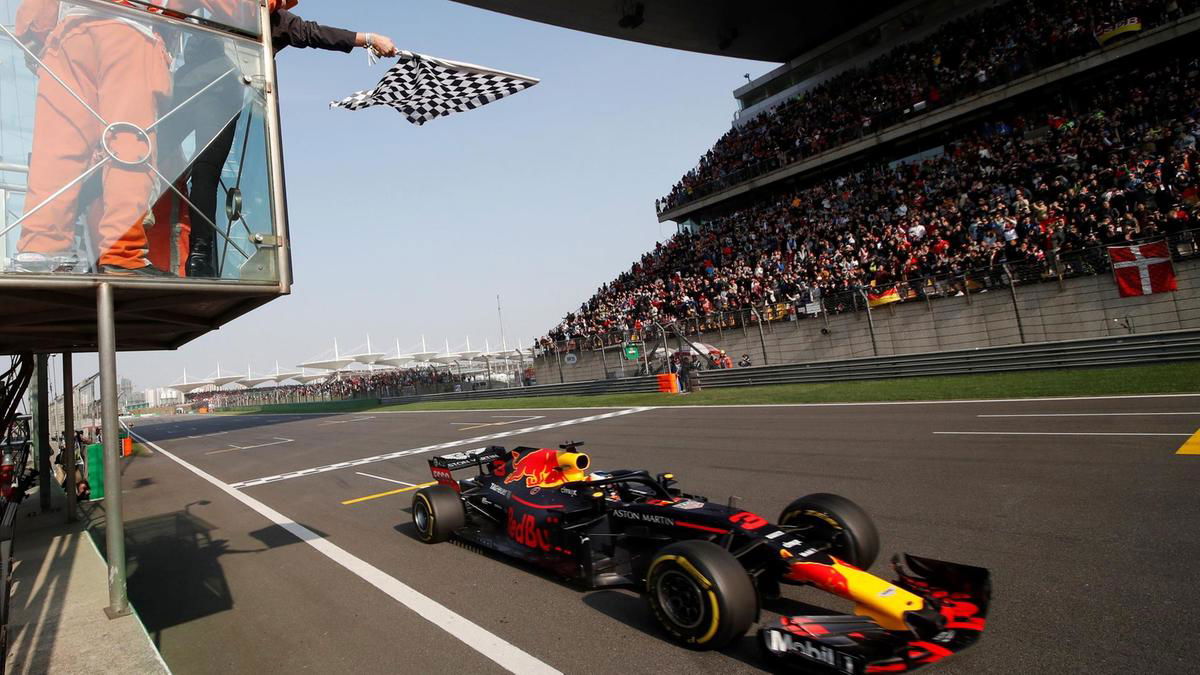
Imago
image source: Pinterest

Imago
image source: Pinterest
Round three of the Formula 1 season is nearly upon us. It’s only a matter of days before 20 of the world’s fastest F1 drivers from 10 teams would engage in a slugfest of speed at one of the keenly followed F1 events: the Chinese Grand Prix.
Watch What’s Trending Now!
Truth be told, akin to a mighty predator, the Chinese Grand Prix presents the thrills one usually finds when greeted by a dragon. Thankfully, that happens in comic books. But this well is real racing; Formula 1. And little irony then that China’s the land of one.
The Chinese Grand Prix, first held in 2004 has since arisen as one of the most keenly watched contests world-over. But some interesting tales and contexts mark this 56-lap contest as being one of a kind.
ADVERTISEMENT
When it was completed, the Shanghai International circuit, nestled in the cosmopolitan city was the most expensive F1 circuit, circa 2004.
But once you’re here at Shanghai, you begin to understand just why the track is so highly rated.
Conquering Turn 1 and Turn 2 here- considered among the most demanding of all F1 corners of the tracks on the current roster- could well mean that the life for an F1 driver is well, manageable.
ADVERTISEMENT
But a factor that excites one as much as increasing intrigue is that the Shanghai circuit is home to the longest straight on any F1 track anywhere in the world.
Imagine the importance of this element. Of the 21 Grand Prix venues on the roster, it’s here in the bustling enterprise called China that Formula 1 happens to have the longest stretch of a main straight on a track.
ADVERTISEMENT
Can you picture the tantalizing offering that the Chinese Grand Prix offers with opponents getting an opportunity to go wheel-to-wheel for a distance that’s no shorter than 1.4 kilometers?
The challenge of the Chinese Grand Prix
But it isn’t necessary that a particular track gets the fortune or privilege one of its very own in the middle of high-risk action.
ADVERTISEMENT
Right?
The Austrian Grand Prix, for instance, doesn’t have any driver on the current grid that happens to hail from the European nation.
Interestingly, no Chinese driver has ever managed to set foot on the podium at his home Grand Prix event. Not even Ma-Qinghua, an experienced but lesser-known driver could make any special headlines.
ADVERTISEMENT
This is not to mention that the 31-year-old didn’t particularly hold a chance during his F1 stints at Caterham and HRT Racing being a test driver.
So what could be the other key takeaways from a Grand Prix where Red Bull commanded all the attention in 2018?
Who are the heroes here from the past?
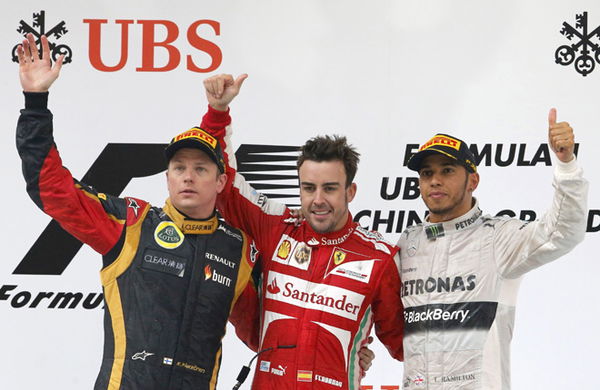
Imago
Indian Express
Alonso’s battled Schumacher with immense might here. Those were closely-fought contests in 2005 and 2006 where the Spaniard eventually overpowered the Ferrari legend.
And it was here that Michael Schumacher clinched what would become his final-ever Grand Prix victory. Remember the 2006 Chinese Grand Prix?
In 2018, Raikkonen, now approaching 40, landed himself on the podium but perhaps much to the chagrin of his critics for whom he was a ‘second-rate’ Ferrari driver.
Vettel’s unimpressive record
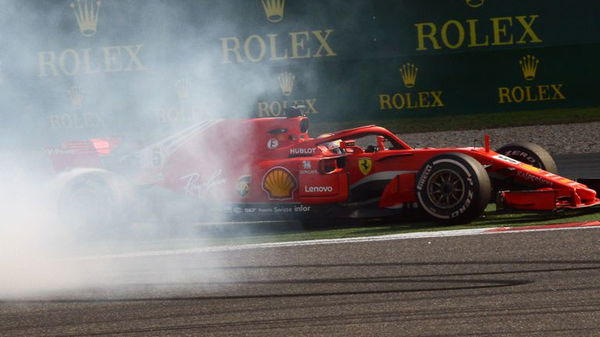
Imago
GP fans
Not since the Chinese Grand Prix of 2009 has Sebastian Vettel stood on the top step of the podium here.
As of the last year, he made contact with Verstappen’s Red Bull, and hence duly damaging his own chances to score valuable points.
This is rather interesting for Vettel’s dominated many an Asian circuit including the Buddh International Circuit(home to the Indian GP, that was initiated in 2011).
But it’s rather surprising how mediocre has Sebastian Vettel’s form been here at Shanghai, with all due respect.
A track of mixed fortunes
The Chinese Grand Prix has unfurled mixed fortunes for a few drivers. But well, that’s true for any track- right?
Well, at times.
A sport so deeply embedded in uncertainties, how could an F1 circuit ever side with the ‘expected?’
Take ‘The Iceman’s’ example for instance.
Alfa Romeo’s Kimi Raikkonen is also called the King of Spa. Correct? But the Finn hasn’t managed to bag a single victory there since 2009.
To that end, the way Lewis Hamilton‘s won at Spa-Francorchamps in recent years promptly puts up a question.
Isn’t it about time that one called the Briton, the new ‘King of Spa!?’
Confused?
Here’s a case in point.
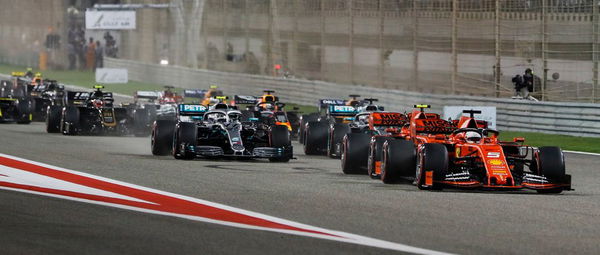
Imago
WTF1
The 2018 World Champion won at Spa, the picturesque contest nestled in the Ardennes in 2010, 2015, and 2017.
Yet, both Lewis and Sebastian are tied at 3 wins apiece at the famous racing venue.
That brings us to the perspective about China, a track where all great guns of the sport have won in the past, including usual frontrunners- Hamilton, Vettel.
But does it occur to you that Ferrari haven’t bagged the checkered flag in China since 2013? Vettel especially hasn’t tasted the champagne from the top step ever since he won back in 2009.
What makes the Chinese Grand Prix particularly interesting is how utterly one-sided has Merc’s domination been at a circuit where Ferrari have struggled. Wolff’s boys have made winning at China a bit of a habit starting the 2014 Chinese Grand Prix.
And yet, Shanghai- that crowned Hamilton a winner in the ’14, ’15’, and ’17 editions had to bow down to an ever-smiling Aussie in 2018.
But while anything could happen this weekend, Valtteri Bottas has duly made a note of how handy could Ferrari’s superior straight-line speed be here given the track boasts of the longest-main straight as shared earlier.
So does China offer any hope for Ricciardo?
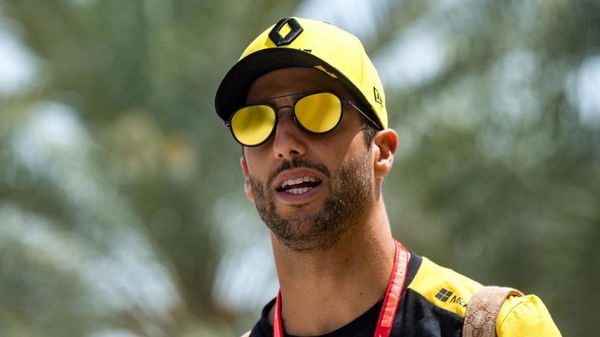
The Chinese Grand Prix is a race that one suspects Daniel Ricciardo would be keen to get off the mark at, for the simple reason that there couldn’t have possibly been a worse start for a usually smiling Aussie in 2019.
For someone who’s registered two DNFs from as many races this year, it doesn’t help to be in Dan-Ric’s shoes.
So a clear question the Chinese Grand Prix might pose of its participants is whether the Aussie can do something interesting here?
And well, if you are wondering why could that even be considered a possibility, then think again.
After all, it was here in 2018 where Daniel Ricciardo, formerly with Red Bull (currently powered by Honda for 2019) earned the sobriquet “race burglar” by none other than Martin Brundle.
The overtakes, the famous double stacking at the 2018 contest, a move that was considered a strategic counter-punch to Mercedes and Ferrari, the Chinese Grand Prix seemed a box office sell-out last year.
The question for the next round is whether someone inexperienced albeit talented as Charles Leclerc, who stood third at Sakhir can hit back at Mercedes?
Come on Shanghai, give us a race again.
ADVERTISEMENT
ADVERTISEMENT
ADVERTISEMENT

